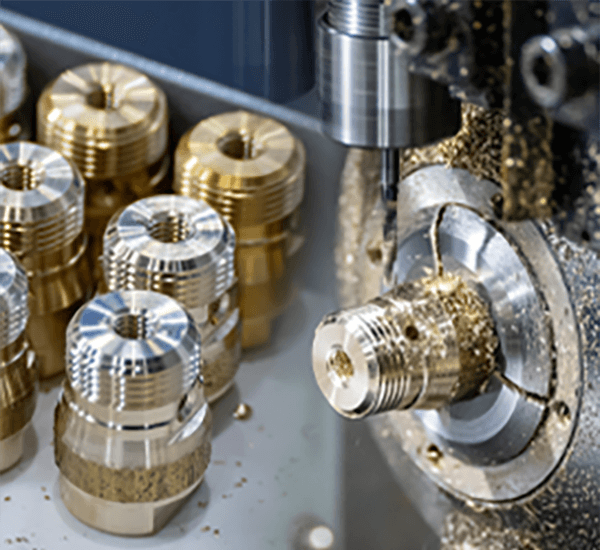
Producing the required exterior polish for a processed workpiece is critical.
- Specification callouts prescribe the detailed finish for parts
- Many specifications reference Ra, an average roughness metric, for surface measurement
- Appreciating callout details is key to ensuring product functionality
- Prescribed surface characteristics govern lubrication, abrasion, and longevity
- Accurate interpretation of callouts is required to realize the targeted surface
CNC Machining: A Definition of Precision

Computer-controlled machining embodies a revolutionary manufacturing technique employing digital instructions the machinery forms elaborate parts with exactness.
- Computer-driven machining creates reliable parts from assorted materials
- The versatility of CNC machining makes it ideal for aerospace, automotive, medical, and electronics
- G-code driven machining maintains reliable consistency across batches
From early-stage prototyping through mass manufacturing CNC machining underpins modern fabrication
Understanding CNC Machine Specifications
Making sense of CNC specs can seem confusing on first pass
Yet armed with basic knowledge and methodical steps you can manage technical specifications
Commence with recognizing main metrics: spindle rpm, feed, precision, work volume, control system
Each metric impacts the machine’s aggregate capability.
Illustratively, greater spindle rpm aligns with softer workpieces; increased feed raises manufacturing pace.
Perceiving such relations guides selection of appropriate CNC equipment
Always examine producer technical literature in detail.
Provided manuals commonly contain clarifying information and define jargon
CNC Machines Explained: A Full Guide
CNC systems refer to programmed machine tools for accurate automated part production across materials They accept digital G-code to steer tools and control machining actions.
- Typical CNC models span milling centers, rotary lathes, CNC routers, plasma tables
- Cutting methods suit steels, plastics, woods, and layered composites
- Likewise CNC solutions enable fast prototyping and small-lot production for enterprises and research labs
CNC Fundamentals and Principles
They embody an integration of hardware accuracy and advanced software regulation Automated tools implement code to produce elementary parts and sophisticated assemblies Essential concept transposes digital designs into manufactured reality.
- Numerical control manufacturing
- Software control implementation
It includes exact tool motions driven by CNC instructions Technicians are essential for choosing cutting settings, supervising processes, and validating final quality.
Influence of Finish on CNC Operations
Obtaining required finish during machining is essential It determines product function and aesthetic quality Substrate properties, machining variables, and post-process methods shape surface outcome.
Superior polishing extends service life; rougher finishes may limit capability Numerical control machining supplies multiple methods and cutters to obtain target textures.
- Such as employing varied cutter geometries |coated inserts|speed settings to obtain particular finish
- Moreover post-machining steps like polishing or sanding improve surface quality
Understanding the relationship between machining parameters and surface finish is essential for achieving optimal results in CNC machining operations.
CNC Machine Basics: From Operation to Applications
A precise fabrication technique, it applies computer-controlled machines to produce parts from assorted materials They run numerical instructions to manufacture complex shapes consistently Awareness of G-code, tooling, and machine operation aids successful production
CNC applications stretch across aerospace, automotive, medical device, and electronics industries From precision engine parts to detailed injection molds, CNC delivers complex products
Callouts and Surface Roughness for CNC Parts
Clear finish definition is critical for CNC machined components It secures that the final item meets both functionality and looks Manufacturers often rely on Ra (roughness average) to represent surface finish Expressed in units like µm or mils, the metric describes average roughness amplitude.
Consider needed smoothness and the part’s application to determine finish requirements

Generally fine finishes benefit components requiring precision alignment and tolerance
Rougher textures often suit parts intended for grip or high-friction contact
Leverage precise callout notation within drawings to indicate required finish Record Ra alongside additional machining recommendations or surface treatments.
Consider that thorough finish callouts underpin quality manufacturing
CNC Equipment Types and Use Cases
There exists a diverse field of CNC machines built to serve many operational purposes They use CAD-generated toolpaths to control tooling for exact component production.
- Turning equipment specializes in rotating the workpiece to create cylindrical shapes
- Routers carve wood composite and plastics into detailed shapes and profiles
- Plasma machines slice thick steel and ferrous metals rapidly using plasma arcs
Pick machines based on material compatibility, feature detail, and dimensional demands Specialized CNC abilities fulfill industry requirements across sectors from transport to healthcare.
Attaining Top-tier Surface Finish Through CNC
Producing a high-quality finish matters across manufacturing and CNC approaches provide precise control to reach it Through tailored feed rates spindle selection and tool design engineers control surface formation and limit imperfections Also advanced insert materials and suitable coolant practices support improved finishes By choosing tailored toolpaths and precise setups operators can deliver parts with outstanding finishes.
Securing Surface Finish Through CNC Programming
Programming mastery of surface parameters is essential for desired outcomes The chosen machining parameters including feed rate spindle speed and cutting tool geometry exert a significant influence on the final surface texture Careful selection of these parameters in conjunction with proper lubrication and coolant management can yield a smooth and flawless surface finish.
- Furthermore regular tool maintenance and inspection are essential for ensuring a consistent and high-quality surface finish over time Besides that systematic tool upkeep and monitoring ensure sustained surface quality what is cnc Also ongoing tool care and inspection support sustained finish reliability
- To optimize surface finish programmers should consider factors like material type desired surface roughness and the application requirements
- Simulation aids in adjusting parameters virtually to prevent surface problems
- Also ongoing tool care and inspection support sustained finish reliability
